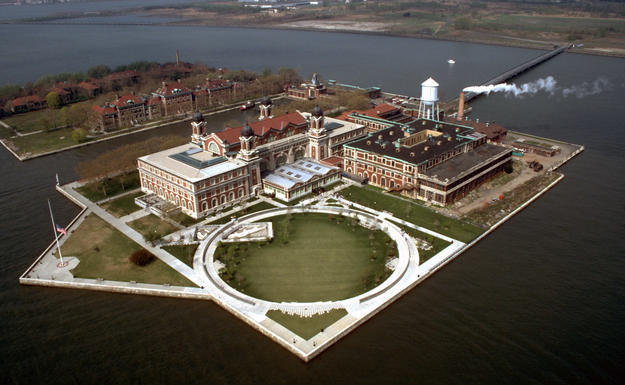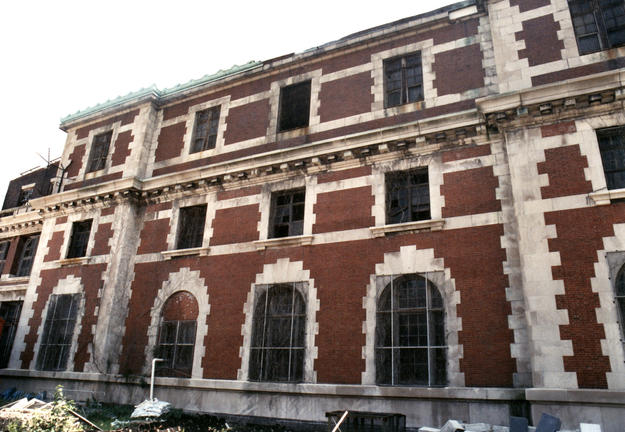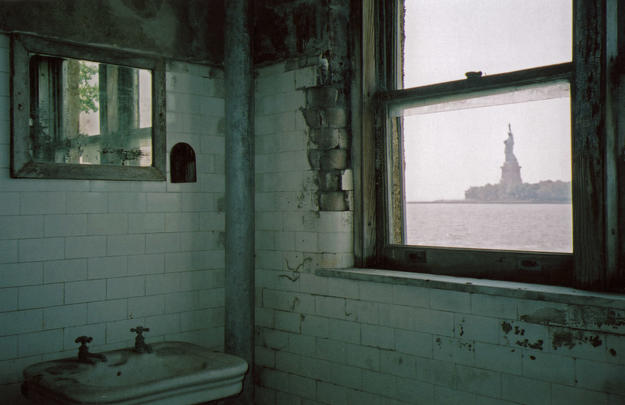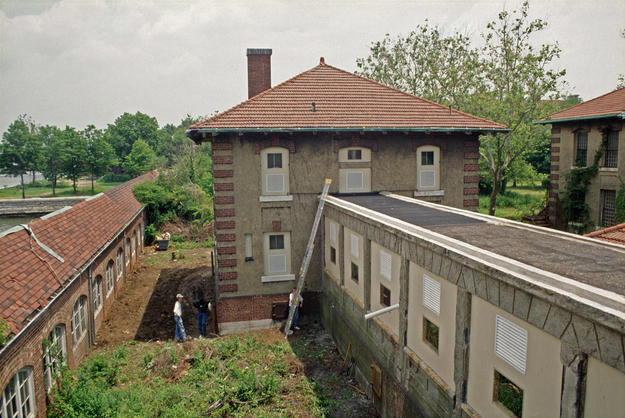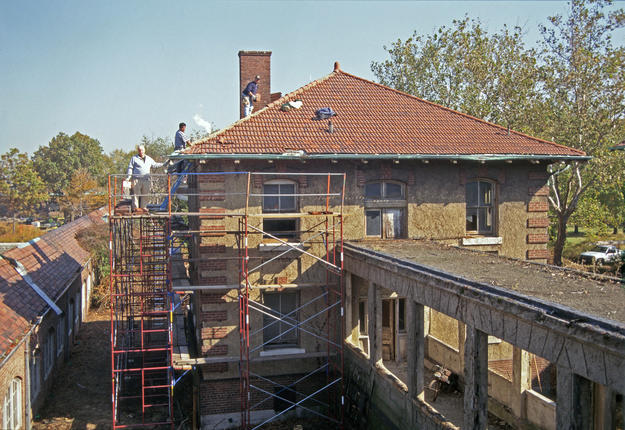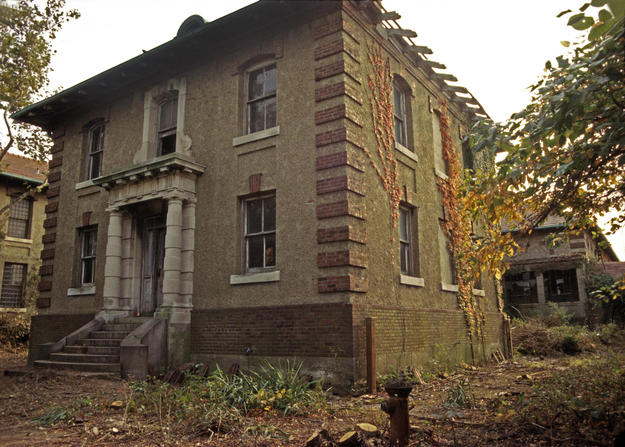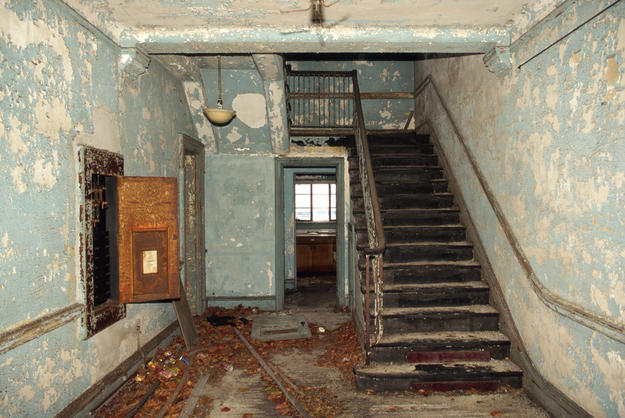Ellis Island was the principle point of entry for immigrants to the United States from 1892 until 1924, during which period an estimated 12 million people were processed. The north half of Ellis Island housed the main immigration facilities. An artificially created land area referred to as the south side of the U-shaped island accommodated a ferry landing slip and a sprawling state-of-the-art public hospital complex of some 29 structures.
Despite the historic significance of Ellis Island and its prominent location adjacent to the Statue of Liberty, the entire island was deemed surplus U.S. government property in 1951 and abandoned. Efforts have been underway since the mid-1970s to preserve Ellis Island as a site of national, if not international, historical importance.
Preservation of the south side of Ellis Island
The Main Building (immigration building) on the north side of the island was rehabilitated between 1981 and 1990, but the south side remained in disuse and was vulnerable to severe weathering due to its exposed location. The south side of Ellis Island was included on the 1996 World Monuments Watch, which helped to draw national and international attention to the work required to restore all structures on the island. We undertook a stabilization project for select buildings and corridors on the south side of the island in 1997, which focused on the stabilization of the Office and Laboratory Building, built in 1909, using appropriate, cost-effective and efficient methods, materials, and craftsmanship. The drainage system, roof tiles, and doors were in need of repair and aggressive vegetation needed to be cleared. Due to hazardous materials and potentially dangerous conditions within the buildings, the project was approached with the idea that all necessary stabilization work could be accomplished from the exterior. Site work included identifying and protecting the historic landscapes and plant specimens, and cautiously removing vegetative overgrowth around the buildings and pathways, including pruning overhanging limbs, clearing clinging vines, and applying herbicide. Historic fabric was collected and safeguarded by the National Park Service staff for documentation and cataloguing, scaffolding was erected, vented window panels were constructed and installed, and weatherproofing measures were carried out. The reinforced concrete was repaired and loose concrete removed. This effort, conducted in cooperation with the New York City Landmarks Conservancy, led to support resulting in the stabilization of the entire south side of Ellis Island in subsequent years.
The Baggage and Dormitory Building on the north side of Ellis Island, which accommodated immigrant detainees and housed family members of hospital patients, was listed on the 2006 Watch, in an effort to further assist Save Ellis Island, a fundraising arm of the National Park Service, to address unrestored buildings based on an island-wide needs assessment. This building was constructed in 1908, designed in Beaux-Arts and neoclassical styles, and contains the only existing collection of in situ graffiti on the island, created by immigrants surviving in limbo on the edge of America. We supported the June 2008 Education/Awareness Strategy Forum at Ellis Island, which recognized the significance of the preservation project undertaken on the island and discussed ways in which the preservation field and general public could treat the preservation work as an educational resource. The efforts of Save Ellis Island yielded the Ellis Island Institute and Conference Center, which provides educational and public programming on the island, as well as the potential for expanded programming relating to public health, immigration, and historic preservation.
The cultural, historical, and even typological significance of Ellis Island is indisputable. The hospital complex represents an important part of the immigration process, since medical examinations were a key part of the experience. Warding off problems of contagious (especially incurable diseases) at such national entry points was—and continues to be—of paramount concern to health officials. Preserving the hospital complex provides an opportunity to interpret the history of public health concerns in the U.S. and the sustainable preservation of the south side of Ellis Island offers enhanced visitor experiences and learning opportunities about the famous island complex.

